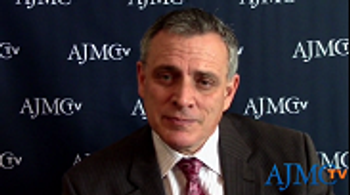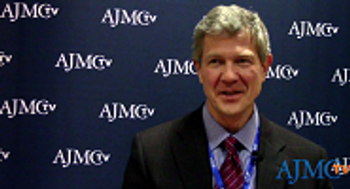
It's a simple idea, but a radical one. Let people know in advance how much health care will cost them-and whether they can find a better deal somewhere else.

It's a simple idea, but a radical one. Let people know in advance how much health care will cost them-and whether they can find a better deal somewhere else.

It is always important to remember that healthcare and health insurance are two very different things, and neither of them is a guarantee of good health.

While some patients and physicians are not aware of the costs of care, others are concerned about whether they can afford treatment options at all. Dr Miller describes some of the major steps to the incremental benefits and incremental costs incurred by new agents.

Implementing the new ICD-10 procedural and diagnostic codes, which the CMS says must happen by Oct. 1, will be more expensive than previously estimated, according to new research. But costs will vary widely depending on practice circumstances.

Billions of dollars are wasted and thousands of lives lost each year through inefficient or ineffective medication management. It has been estimated that the misuse of prescription drugs in our healthcare system is up to a $300 billion problem annually.

Steven D. Shapiro, MD, executive vice president, chief medical and science officer, University of Pittsburgh Medical Center (UPMC), says that when improving care, sometimes less is more.

The revision process for ICD-11 is currently underway and the final version will be released in 2017, according to a fact sheet from the World Health Organization.

The Obama administration on Thursday reported what it called encouraging results from efforts to reduce healthcare costs and improve the quality of care for more than 5 million Medicare beneficiaries under Obamacare

While expensive hospitals might earn a better reputation, there is little evidence that they provide better care.

There is a radical and bipartisan bill making its way to Congress that could change the future of Medicare.

In certain cases, a state can recoup its medical costs by putting a claim on a deceased person's assets.

Democratic Gov. Terry McAuliffe's administration says the state would save money instead of spending it by implementing the new federal health care law.

With the average cost of an emergency room visit hovering at $1,200, funneling patients through the ER is not an effective way to manage chronic health conditions. Those who lack medical insurance aren't the only subgroup using the ER as a doctor's office.

As U.S. consumers are asked to shoulder more prescription drug costs, drugmakers say prices for brand-name medicines will keep rising, mainly because use of their products reduces other healthcare costs.

The weak correlation between Medicare and commercial insurance spending is due to negative correlations between each sector's price and the other sector's volume.

Hospitals, physicians face mounting policy and market pressure to disclose prices.

Scott Ramsey, MD, PhD, Fred Hutchinson Cancer Research Center, says that right now, only a small portion of health economics and outcomes research (HEOR) fits into the oncology model.

The promise of the Affordable Care Act is right there in its title: Affordable. Yet, anti-poverty agencies across the country fear that even with the federal financial assistance available under the law, health insurance will remain unaffordable for significant numbers of low-income Americans.

The US Chamber of Commerce says it aims to include the Affordable Care Act in its list of 2014 objectives. Nearly 2 years ago, the chamber voiced its intent to repeal the health reform bill after it was enacted in 2010.

New federal estimates show that U.S. health spending growth continued to grow at a historically low rate in 2012 even as the economy rebounded.

An annual report from the Centers for Medicare & Medicaid Services finds that health spending totaled $2.8 trillion in 2012, which accounted for 17.2% of the nation's gross domestic product (GDP) and was down slightly from the 17.3 % of GDP in 2011.

Hospitals in the U.S. have rebounded from the Great Recession and are showing stronger operating margins than in years past, even as more care shifts from inpatient to outpatient.

The panelists discuss clinicians and their perspectives on financial constraints in treatment of NSCLC.

Dr Peskin begins by stating, costs are exceedingly consequential. Cancer care and treatment is occupying, and with demographics being what they are, increasingly larger relative total cost of care across the US, including various national organizations.

Dr Peskin discusses programs such as Choosing Wisely and how providers must be mindful of high value, cost-conscious, cost-aware care.

259 Prospect Plains Rd, Bldg H
Cranbury, NJ 08512
© 2025 MJH Life Sciences®
All rights reserved.
